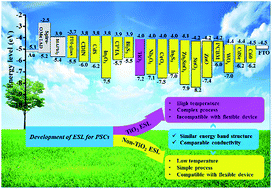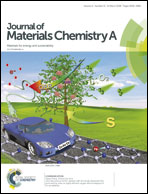Low-temperature processed non-TiO2 electron selective layers for perovskite solar cells
Abstract
Organic–inorganic halide perovskite solar cells (PSCs) have attracted much attention in recent years and their power conversion efficiency (PCE) has rapidly improved from 3.8% to 22.7%. However, the commonly used electron selective layer (ESL), TiO2, requires a high-temperature post-treatment during its preparation process, which is not compatible with flexible PSCs on plastic substrates. Moreover, it is energy intensive and not suitable for the low-cost mass production of PSCs. Developing low-temperature processable ESLs can solve these problems and realize the all-low-temperature fabrication of PSCs. Therefore, in this review, the current progress in low-temperature processed ESLs, especially non-TiO2 inorganic and organic materials and quantum dots (QDs), such as SnO2, ZnO, WOx, CeOx, Nb2O5, In2O3, CdS, Bi2S3, In2S3, Zn2SnO4, fullerene, non-fullerene, CdSe QDs, etc., is summarized. Their preparation methods, properties and applications for use in PSCs are highlighted. Several results obtained by our group are also included. These low-temperature processed ESLs will provide more possibilities for implementing the all-low-temperature fabrication of PSCs with high performances.

- This article is part of the themed collection: Recent Review Articles


 Please wait while we load your content...
Please wait while we load your content...